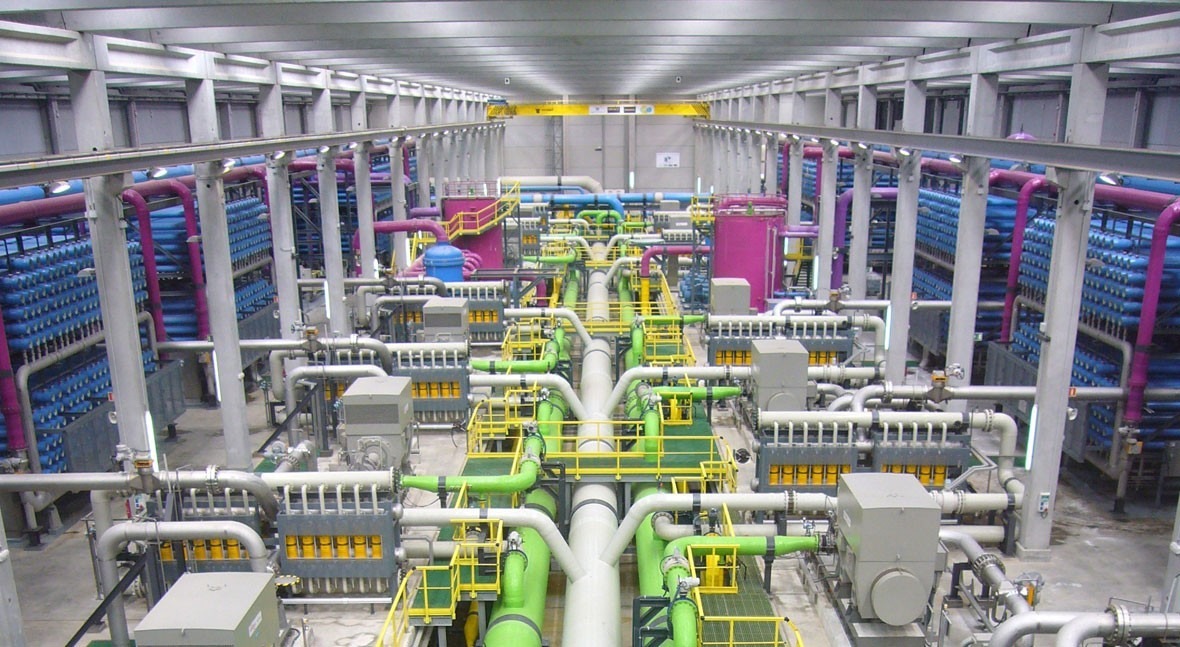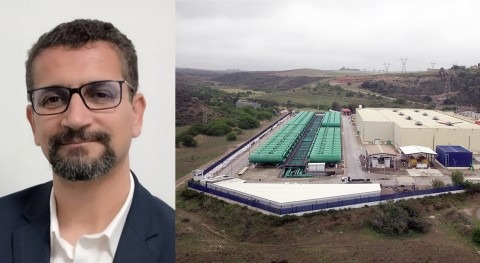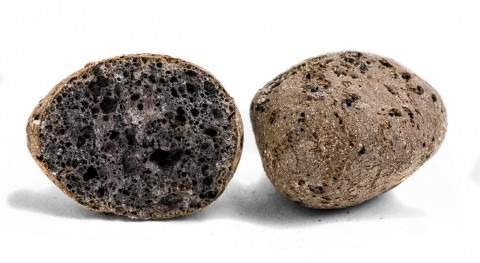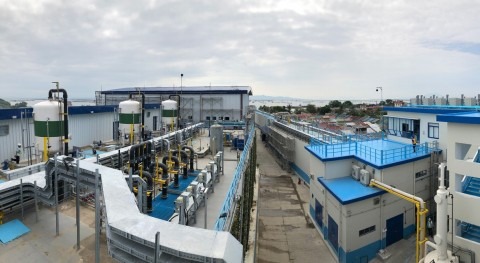Desalination is a consolidated solution to supply drinking water in areas with water scarcity. This technology allows producing complementary resources that did not previously exist, with the added value that the effluent generated has a quality suitable for human consumption, key for water resources planning. Reality confirms this fact, if we take into consideration the growing investments in desalination in regions such as Middle East, the United States and Latin America.
The feasibility of a desalination process, both technically and economically, depends to a great extent on the pretreatment of abstracted water. Optimal pretreatment prevents and minimises membrane incrustation, fouling and attack. Therefore, ensuring quality water to input into the osmosis units is of utmost importance. Aside from aspects linked to water quality after pretreatment, reducing operating costs during this phase is especially important to ensure the sustainability of the cost per cubic metre: reducing the consumption of energy and reagents, and saving in equipment maintenance. Filtralite® Pure meets those requirements with regards to quality and reduction of operating costs, increasing as well the production capacity and decreasing the head loss.

Aerial view of the Beckton plant (London, Thames Water), where filtration of the pre-treatment is carried out with Filtralite® Pure.
The Filtralite® Pure filter media replaces traditional granular material — sand and anthracite — used to filter suspended solids (SS) during pretreatment prior to desalination. Filtralite® Pure is a next generation expanded clay product manufactured by Leca, Saint Gobain. Conceived specifically for this purpose, it offers very high efficiency filtration, both in terms of effluent quality and in terms of cost reduction. The explanation for this superior quality and longer filter runs lies in the structural characteristics and composition of the material. Filtralite® Pure has a very high porosity with great specific area, about 3 m2/g, and has low hydraulic impedance; a large portion of the pores in the material allow a flow. In short, it is the ideal filter material: it retains most of the SS with a slow head loss build up, offering deep filtration and slower clogging times.
The composition with Filtralite® MC 1.5-2.5 is the natural replacement for anthracite in traditional dual media sand-anthracite beds
Two types of Filtralite® Pure solutions are used in desalination, both of them with dual media. The first one would be a combination with Filtralite® MC 1.5-2.5 in the top layer and sand with a grain size of 1.0-0.8 in the bottom layer. The second one is our Filtralite Mono Multi Fine® product.
The composition with Filtralite® MC 1.5-2.5 is the natural replacement for anthracite in traditional dual media sand-anthracite beds. Filtralite® MC 1.5-2.5 increases the length of filter runs, with a ratio 50-150% higher than a traditional configuration. Also, it improves the quality of the effluent from the filters by 0.5-1 in the SDI (silt density index) value, being particularly resilient to peaks in turbidity and SS.
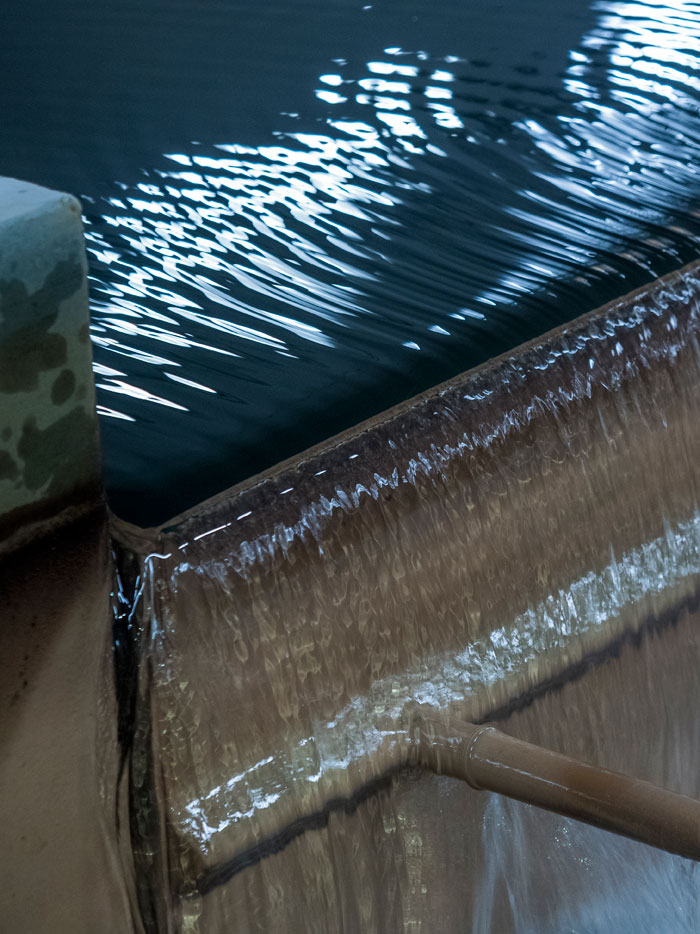
Spillway of an open filter, operating with Filtralite® Pure.
A project reference for the application of Filtralite® MC 1.5-2.5 in desalination is the Palmachim Plant, with 274,000 m3/day, in Israel. As part of a plan to reduce energy consumption and OPEX, the plant needed to increase the filtered output and improve the quality of the pretreatment. After a series of pilot tests, Filtralite® Pure was installed, replacing sand-anthracite in the filtration step. Installing Filtralite® Pure showed that the production capacity could be increased by almost 50% without building new beds, by doubling the filtration rate from 7 m/h to 12 m/h. Also, the operating time between backwashes increased from an average of 30 hours, to peaks of 200 hours. Moreover, membrane biofouling decreased due to better effluent quality. As a result, the 20 micron cartridge filters were replaced with 5 micron filters. Currently, the replacement frequency of these 5 micron filters is much lower than the replacement frequency with the previous filters. The savings achieved just by decreasing the frequency of replacement of the cartridge filters and improving the quality of the effluent amounts to € 300,000 per year. The energy savings as a result of lower backwash rates, linked to the increased production with Filtralite® Pure meant that the change in media had a payback time of less than two years.
A project reference for the application of Filtralite® MC 1.5-2.5 in desalination is the Palmachim Plant, with 274,000 m3/day, in Israel
The second option for desalination, Filtralite Mono Multi Fine® pursues an extra increase in the quality of filtration, while maintaining the long filters runs. It is a combination of Filtralite® NC 0.8-1.6 and Filtralite® HC 0.5-1. Drawing a parallel, the Filtralite® NC 0.8-1.6 layer would act as the anthracite and the Filtralite® HC 0.5-1 layer would provide high precision filtration, replacing the sand. The degree of improvement in comparison with sand and anthracite is substantial. The removal of particles with a size larger than 2 µm is higher than with sand. This leads to SDI, turbidity and SS values that are much lower than those obtained with sand-anthracite, thereby increasing the life of the membranes and improving the operation of the microfiltration. In addition, as opposed to what happens with granular media that increase the filtration quality by reducing the grain size, the filter runs continue to be long, between 50% and 100% longer than with other solutions.
Furthermore, the head loss with Filtralite Mono Multi Fine® is very low, about half, even with the fastest filtration rates (15 m/h – 20 m/h). This allows designs where pumping systems require less energy or open filters with low water levels that achieve very high filtration rates.


